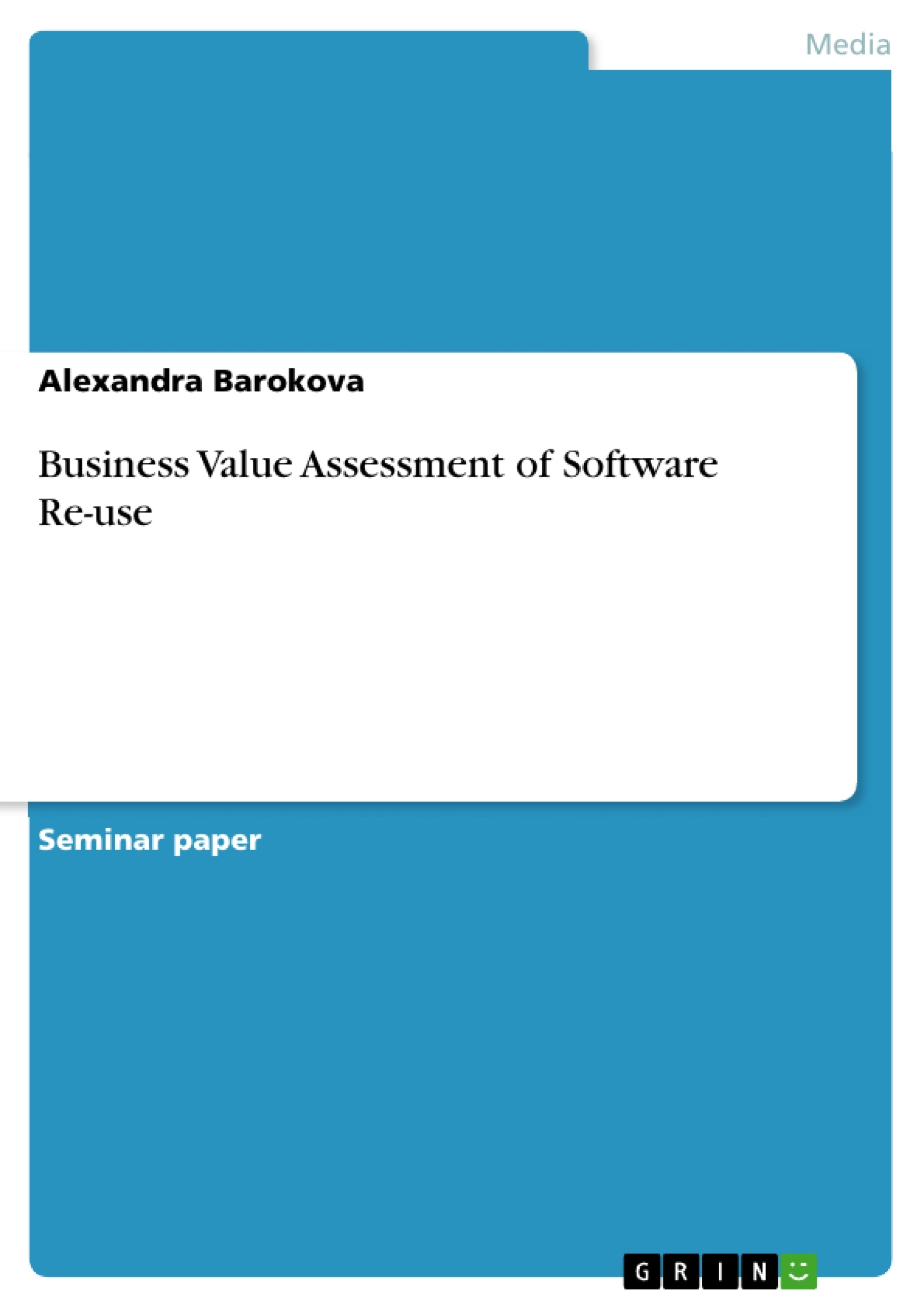Software re-use has been gaining importance during the recent years, as it offers companies a range of advantages and helps to retain a competitive advantage.
This seminar paper focuses on the software re-use in particular, which is also a part of the service oriented architecture. After implementing software re-use, companies have to measure their success in the first place and later monitor if the desired company goals have been met. Metrics and models that are able to capture the business value of service re-use are the central part of this seminar paper. It concludes with presenting empirical studies that are focusing on software re-use measurement aspects, such as customer satisfaction, defect-density and stability of re-use and the intension to re-use from the software developers’ point of view.
Inhaltsverzeichnis (Table of Contents)
- ILLUSTRATION REGISTER
- ABBREVIATION REGISTER.
- ABSTRACT
- 1. INTRODUCTION
- 2. BACKGROUND.
- 2.1. SERVICE ORIENTED ARCHITECTURE (SOA).
- 2.2. SOFTWARE RE-USE
- 2.3. BUSINESS VALUE ASSESSMENT OF SOFTWARE RE-USE IN GENERAL..
- 3. MEASURING BUSINESS VALUE OF SOFTWARE RE-USE: METRICS AND MODELS......
- 3.1. COST-BENEFIT ANALYSIS
- 3.2. MATURITY ASSESSMENT
- 3.3. AMOUNT OF RE-USE..
- 3.4. FAILURE MODES ANALYSIS.
- 3.5. REUSABILITY ASSESSMENT.
- 3.6. RE-USE LIBRARY METRICS
- 3.7. BREAK-EVEN-POINT ANALYSIS.
- 4. EMPIRICAL STUDIES OF RE-USE BUSINESS VALUE ASSESSMENT
- 5. CONCLUSION
- LIST OF BOOK REFERENCES
- LIST OF ARTICLE REFERENCES
- LIST OF INTERNET REFERENCES
Zielsetzung und Themenschwerpunkte (Objectives and Key Themes)
This seminar paper explores the business value of software re-use, particularly within the context of service-oriented architecture (SOA). The paper aims to present metrics and models that can be used to measure the success of software re-use and its impact on business performance. It also reviews empirical studies that investigate the effectiveness of software re-use in practice.
- Measuring the business value of software re-use
- Metrics and models for assessing the impact of software re-use
- The role of SOA in facilitating software re-use
- Empirical evidence on the effectiveness of software re-use
- The connection between software re-use and business agility
Zusammenfassung der Kapitel (Chapter Summaries)
The paper begins by providing an introduction to the topic of software re-use, outlining its importance in the context of electronic business and its potential to enhance competitiveness. Chapter 2 dives into the background of SOA, explaining its key benefits and how it can be leveraged for successful software re-use. Chapter 3 presents a range of metrics and models that can be utilized to evaluate the business value of software re-use, including cost-benefit analysis, maturity assessment, reusability assessment, and break-even point analysis. Chapter 4 delves into empirical studies that examine the measurement aspects of software re-use, shedding light on key factors such as customer satisfaction, defect density, and developer perspectives on re-use.
Schlüsselwörter (Keywords)
The central themes of the paper revolve around software re-use, service-oriented architecture (SOA), business value assessment, metrics and models, and empirical studies. Key concepts include cost-benefit analysis, maturity assessment, reusability assessment, break-even point analysis, customer satisfaction, defect density, and developer intentions regarding re-use.
- Quote paper
- Alexandra Barokova (Author), 2013, Business Value Assessment of Software Re-use, Munich, GRIN Verlag, https://www.grin.com/document/340148



